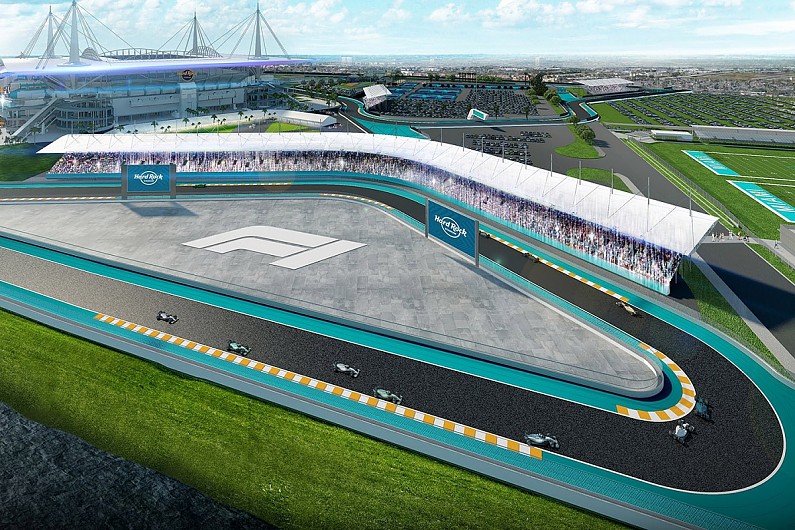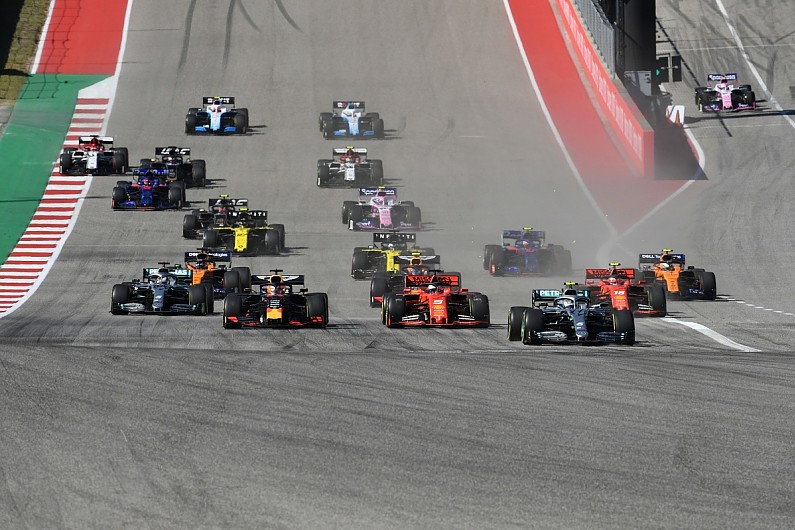Amid Formula 1’s continual pursuit to add more races to its calendar, the appeal of a second race in the United States is clear. But as LUKE SMITH explains, there are several feasible candidates it can consider
Since regaining a foothold in the United States at the Circuit of The Americas in 2012, Formula 1 has been eager to expand its American footprint. The push only intensified following the series’ acquisition by Liberty Media in 2017, which quickly set designs on a second event in the near future to help appeal to a market that has traditionally been difficult to crack.
Following three years under the stewardship of an American, Chase Carey, F1 is now being headed up by more of a ‘racing’ man in ex-Ferrari team principal Stefano Domenicali of Italy. But Domenicali’s appointment has not marked a shift in approach from F1. Despite suggestions of future calendar rotation and a potential reduction in the number of races from the tally of 23 intended for 2021, adding another American race remains a top priority.
“Our strategy in the future will be to be more present in the US, with more than one grand prix,” Domenicali explained earlier this month. “As you know, Austin has been very important in the last years of our calendar. It will be also in the future. We are discussing with them the renewal of the agreement.
“There are others involving other areas of the American country, but they are not at the level where I can say yes, they are there. In the next couple of months, we will decide what will be possible in terms of discussion with regard to that country, and eventual rotation or stabilising with two that are fixed.
“It’s a work in progress. But I can guarantee to you there is now big interest in the USA with Formula 1.”

Even with the increased interest from new markets and venues in the wake of last year’s calendar shake-up, F1’s commitment to a second US race remains clear. It harks back to the late 1970s and early ’80s when it routinely had more than one American race, even holding three in 1982.
But what are the most realistic projects for F1 to get an accompanying grand prix to COTA off the ground in the coming years?
“Miami is the one that – as you know, there’s nothing secret – is the most advanced in terms of discussion” Stefano Domenicali
Miami has been the primary focus point for Liberty in the United States ever since its takeover. Carey regularly used the phrase “destination cities” when discussing where he wanted to take F1 in the future, with Miami and Hanoi in Vietnam being the primary examples. Initial plans to get a Miami street race on the calendar as early as 2019 were subject to pressure from local groups, leading to revisions of the planned circuit layout and a delay in its addition to the calendar.
The Miami project is one Liberty has maintained it is committed to, working with the owners of the Miami Dolphins NFL franchise on the promotional and organisational side, headed up by Tom Garfinkel. The track is set to be constructed around the team’s Hard Rock Stadium, avoiding the use of public roads under the latest proposed track layout.
Miami did not feature on the calendar initially announced for 2021 late last year, but Carey stressed at the time the project was very much alive and something F1 was committed to.
Domenicali has echoed that message, saying that as far as a second US race is concerned, Miami currently stands out as the most advanced project.
“Miami is the one that – as you know, there’s nothing secret – is the most advanced in terms of discussion,” Domenicali said. “Miami is the most advanced one in terms of possibility.”

New-build circuits and projects always face significant hurdles, seen most recently with the struggles faced by Vietnam, which now looks unlikely ever to hold a grand prix in Hanoi. But the Miami project seems to be stronger and better-planned. Liberty is not looking to rush it onto the calendar just to score an easy win, preferring to build something that is long lasting and sustainable.
But that does not mean other American events are not being explored, with one former host circuit emerging as a strong candidate for a grand prix in the future: Indianapolis. Since taking over Indianapolis Motor Speedway and IndyCar in late 2019, Roger Penske has been open about his interest in bringing F1 back to the Brickyard, which hosted the United States Grand Prix between 2000 and 2007.
“We want to add capability,” Penske said at the time of the announcement. “What can we use this for? Can we run a 24-hour race here? Can we run a Formula 1 race here? What are the things we can do? This is a great asset.”
Even following the impact of the COVID-19 pandemic, F1 remains high on the hit list for Penske, and there is mutual interest. Carey was notably private about any discussions being had over future races, but indicated to Autosport last year that there was a definite interest.
“It’s obviously an iconic track for world racing,” he said. “It’s part of the Triple Crown: Monaco, Le Mans and Indy. So it speaks to what that track means. It’s a special track for the motorsports world.”
To work with a pre-existing track, especially one of the renown of Indianapolis, would offer F1 a lot of benefits. The scars of the 2005 race have by now largely healed, with the series enjoying a decent resurgence in profile. Alexander Rossi may have only briefly ended the wait for an American driver in 2015, and there may not be any notable juniors on the horizon – budget being an issue for F3 race winner Logan Sargeant – but even so, the TV figures have been rising steadily. ESPN’s TV figures remained largely unchanged last year despite the revised calendar featuring no races on a friendly timezone, forcing fans into lots of early starts.

If F1 were to go down the route of reviving a race at Indianapolis, it could even help its bid to attract new fans by shaking up the format, going down a route such as the sprint race format that could be trialled at three races this year. Why not adopt some of the spectacle of the Indy 500 – which is set apart on the IndyCar calendar in so many ways – to make it more of a stand-out event for F1?
Miami and Indianapolis would appear to be the most likely options for F1 to get a second US race on the calendar in the near future, but other events could sense an opportunity. Long Beach hosted the US GP West between 1976 and 1983 before becoming an IndyCar event, with the idea of taking F1 back to California being floated six years ago before petering out.
“What we have already planned is a plan of quite strong communication in the US. We need to hammer information with the right channels in a continuous way” Stefano Domenicali
The more that F1 enjoys success with more traditional tracks in Europe, seen with Mugello and Imola last year, the more there’ll be questions about a similar approach to circuits in the United States, even if getting grand prix racing at a Road America or a Barber may seem fanciful.
Regardless of where it lands, the commitment from F1 to get another American race on the calendar in the coming years is clear – as it the importance of its messaging. Domenicali does not want the buzz around F1 in the United States to only last in the week leading up to the Austin race. He is eager to ensure the messaging goes further, and is already setting to work on that.
“The US needs to be fed with F1 news every day,” said Domenicali. “It’s wrong to go there one week – let’s say you have an incredible push one week before the Austin race, and then be silent.
“What we have already planned is a plan of quite strong communication in the US. We need to hammer information with the right channels in a continuous way. It will take a lot of startup time in terms of investment, but the pay-off will be huge.”
That is F1’s approach to the United States in a nutshell: the lead time will be long, but it will be worth the wait.

